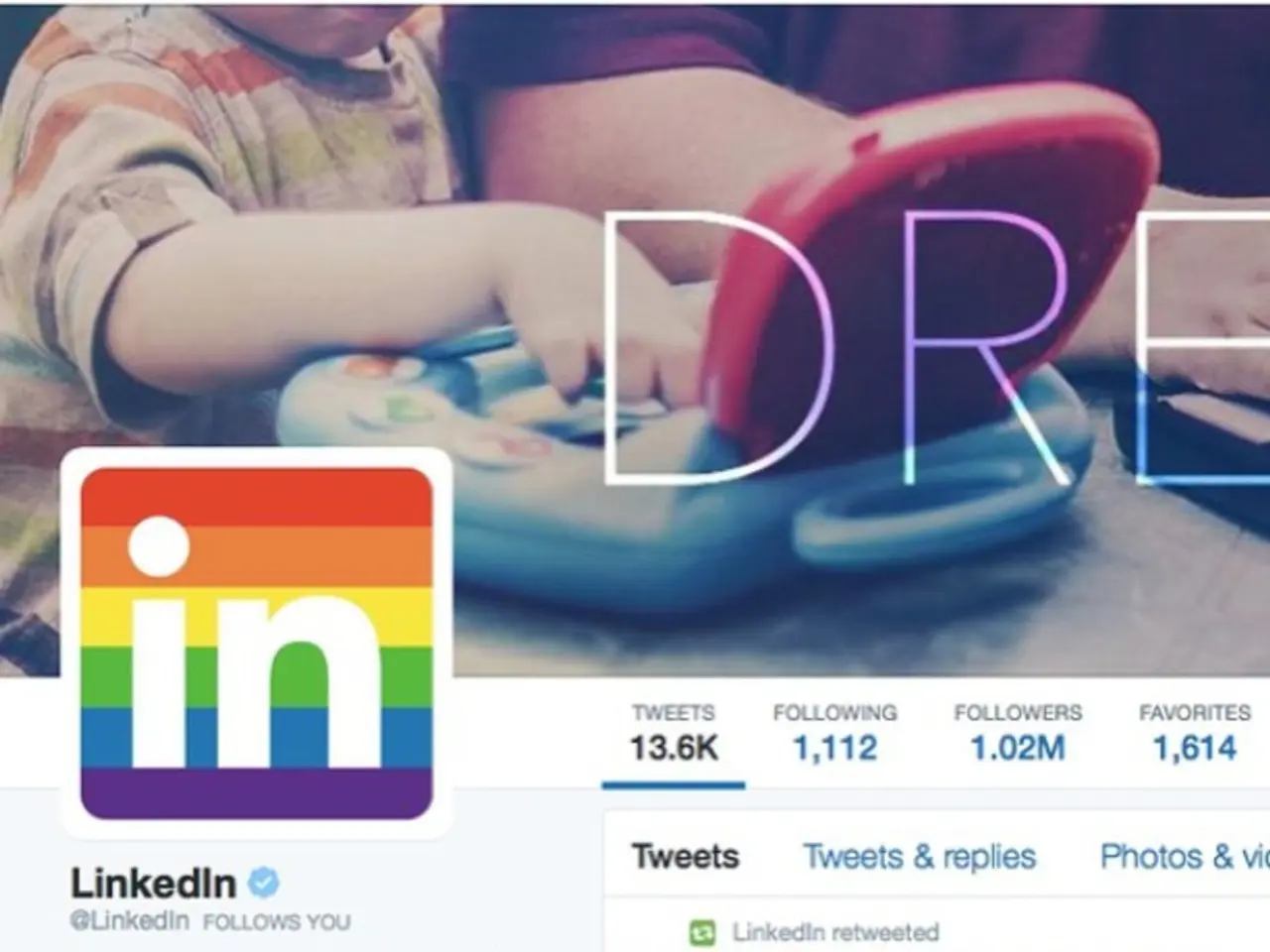AI-produced content marked distinctly on LinkedIn platform
LinkedIn Introduces Content Credentials for AI-Generated Visual Content
LinkedIn, a leading professional networking platform owned by American tech giant Microsoft, has announced the adoption of the Content Credentials (CR) label for AI-generated visual content. This move aims to ensure platform reliability, protect against unauthorized uses, and foster transparency in the content ecosystem.
By authentically labeling AI-created images with verified metadata about their origin, LinkedIn hopes to help users distinguish genuine from manipulated or misleading content. The CR label embeds cryptographically secured information about the creator and the AI tools involved, providing a robust system for content verification.
The CR label serves several purposes:
- Maintaining platform reliability: By enabling users and content moderators to verify the authenticity and provenance of AI-generated visuals, the risk of misinformation or deceptive content passing as human-made is reduced.
- Protecting against unauthorized uses: The label cryptographically certifies the image origin, making it difficult for bad actors to falsely claim or repurpose AI-generated content without attribution.
- Creating transparency: The label reveals how and by whom an image was created, fostering trust in the content ecosystem and encouraging responsible AI content creation.
While detailed LinkedIn-specific descriptions of CR labels are not extensively available, the general blockchain and cryptographic framework of Content Credentials widely recognized in the AI content domain supports these platform goals effectively. This aligns with broader industry emphasis on trusted AI content disclosure and protection against misuse.
The implementation of the CR label initially affects only images and videos visible in the newsfeed. However, the extension to advertisements is expected in the future. LinkedIn's move follows similar procedures adopted by tech giants like YouTube, TikTok, and Meta, all members of the Coalition for Content Provenance and Authenticity (C2PA), of which LinkedIn is also a part.
The quantity of information available online sometimes complicates the verification of its truthfulness, making the indication of dubious content important. The CR label represents a significant step towards ensuring the transparency and authenticity of digital content on LinkedIn.
[1] For more detailed information on the Content Credentials (CR) label and its implementation on LinkedIn, please refer to the official LinkedIn developer and advertising documentation.
- Leveraging the Content Credentials (CR) label, LinkedIn looks to distinguish AI-generated visual content from manipulated or misleading content, fostering a more reliable and transparent platform.
- By embedding cryptographically secure information about the creator and AI tools involved, LinkedIn's CR label aims to protect against unauthorized uses and uphold the integrity of its content ecosystem.




